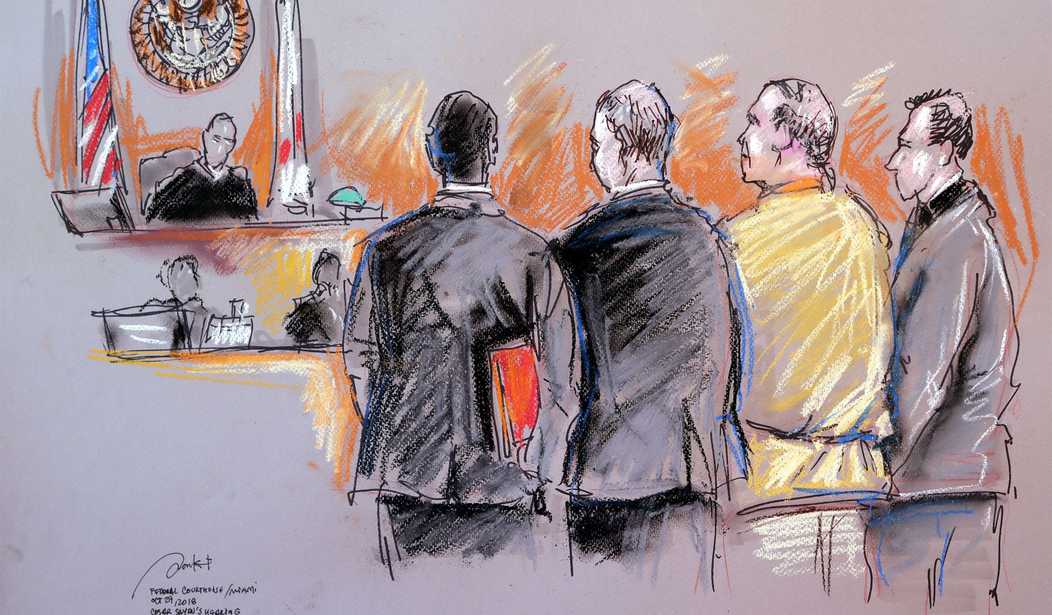Given the recent indictment of former President Donald Trump on federal charges related to his alleged mishandling of classified documents, now is a good time to raise the issue of cameras being barred from federal court.
Via Administrative Office of the U.S. Courts:
Electronic media coverage of criminal proceedings in federal courts has been expressly prohibited under Federal Rule of Criminal Procedure 53 since the criminal rules were adopted in 1946. Rule 53 states: “[e]xcept as otherwise provided by a statute or these rules, the court must not permit the taking of photographs in the courtroom during judicial proceedings or the broadcasting of judicial proceedings from the courtroom.”
In 1972 the Judicial Conference of the United States adopted a prohibition against “broadcasting, televising, recording, or taking photographs in the courtroom and areas immediately adjacent thereto.” The prohibition, which was contained in the Code of Conduct for United States Judges, applied to criminal and civil cases.
Due to political pressure, various initiatives over the years have allowed the limited use of cameras in federal courtrooms to assess the possibility of changing policy: “At its September 2010 session, the Judicial Conference authorized a three-year pilot project to evaluate the effect of cameras in district court courtrooms, video recordings of proceedings, and publication of such video recordings.”
After reviewing the findings of the pilot project, the Judicial Conference elected to change nothing about its policy related to cameras in federal courtrooms except under certain, very specific circumstances:
At its March 15, 2016 session, the Judicial Conference received the report of its Committee on Court Administration and Casement Management (CACM), which agreed not to recommend any changes to the Conference policy at that time. the Ninth Circuit Judicial Council, in cooperation with the Judicial Conference authorized the three districts in the Ninth Circuit that participated in the cameras pilot (California Northern, Washington Western, and Guam) to continue the pilot program under the same terms and conditions to provide longer term data and information to CACM. The following is the current policy for cameras in trial courts:
A judge may authorize broadcasting, televising, recording, or taking photographs in the courtroom and in adjacent areas during investitive, naturalization, or other ceremonial proceedings. A judge may authorize such activities in the courtroom or adjacent areas during other proceedings, or recesses between such other proceedings, only:
1) for the presentation of evidence;
2) for the perpetuation of the record of the proceedings;
3) for security purposes;
4) for other purposes of judicial administration;
5) for the photographing, recording, or broadcasting of appellate arguments; or
6) in accordance with pilot programs approved by the Judicial Conference.
Whose interests does this broad no-camera policy represent — the government’s or the people’s whom the government is supposed to serve? Does it protect due process on behalf of citizens or does it protect government servants from scrutiny? Wouldn’t it make more sense as a policy to allow cameras as a general rule with the option to disallow cameras on a case-by-case basis if a legitimate reason to bar them can be made by the government?
Federal courts are notorious for their high conviction rates compared to lower courts at the state or local levels. According to Pew Research, “only 320 of 79,704 total federal defendants – fewer than 1% – went to trial and won their cases, at least in the form of an acquittal, according to the Administrative Office of the U.S. Courts.”
There are likely many reasons for the extremely high conviction rate in federal court — including perhaps most importantly the vast resources at the federal government’s disposal — but does the lack of transparency factor into it? Almost certainly.
Related: LOL! Even Chris Cuomo Says Trump Indictments Don’t Have ‘The Goods’
Yes, transcripts of federal court proceedings are publicly available by federal statute, but transcripts can only do so much to convey the goings-on in an environment. A picture, as the axiom goes, is worth a thousand words — but not the silly, subjective sketches by (potentially biased) courtroom artists that we are left to rely on.
